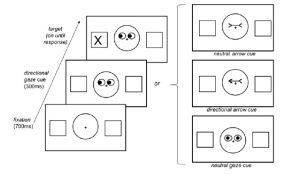In response to a couple of questions about the implications of long-term caffeine intake, I’d thought I’d throw out a couple of findings.
I recently wrote about a study that localized the receptors underlying the arousing effects of caffeine. (A2a receptors, in cells located in the shell of the nucleus accumbens). It’s only natural then to wonder what effect chronic caffeine intake might have on these receptors (and elsehwere in the brain).
That study didn’t look at chronic effects. But back in 1996, Glass et al. found that chronic caffeine consumption increased the global expression of adenosine receptors in the brain , suggesting that this increase was to compensate for caffeine’s antagonistic effects. Withdrawal from caffeine is, at least in part, likley related to a hypersensitivity to adenosine due to this increased number of adenosine receptors. The headaches that accompany caffeine withdrawal are thought to be related to the fact that adenosine is a known vasodilator and the increased receptor density + withdrawal of caffeine from the system leads to a significant drop in blood pressure.
A couple other interesting notes in regards to long-term effects of caffeine:
The Good News
Some case control studies have shown lower incidents of Parkinson’s disease in coffee drinkers vs. non-coffee drinkers, although this finding has not always been replicated. The correlation, when it has been found, was strongest in heavy consumers. (This is certainly a finding I would love to be true!) More evidence in support of these findings come from mouse studies showing that physiological doses of caffeine were able to reduce one of the major toxic factors associated with Parkinsons (MPTP-induced dopaminergic toxicity). It’s been suggested that caffeine may offer neuroprotective effects in the brain via action occurring at A2a receptors, which are the same receptors responsible for the arousing effect of caffeine (and which are also co-localized with dopamine D2 receptors). Additional support for this idea comes from studies in which mice who had their A2a receptors knocked out showed reduced MPTP-induced injury compared to wild types. How this all might be happening on a mechanistic level, however, is not well known.
The less good (but not totally bad) news:
Unfortunately, it seems that acute doses of caffeine often cause a rise in systolic and diastolic blood pressure, increase in catecholamine release and vasodilation (wideneing of blood vessels). However, some studies have shown this effect occurs primarily in non-regular consumers of caffeine. Many studies have shown either slight increases or no difference in blood pressure for regular users of caffeine. In fact, several large scale studies have found that heavy, regular use is protective against heart disease. (yes!) The findings are quite contradictory.
So what to make of all this? Is heavy coffee drinking bad or good for you?
There’s no simple answer to that question. But the paradoxical findings suggest that different individuals have varying levels of risk. And it’s likely that genetics play a significant role.
If one thinks of coffee as a drug, then the notion that the benefits of heavy coffee consumption might outweigh the risks seems very counterintuitive. That is, due to the brain’s propensity to maintain homeostasis, drug taking, either legal or illegal, usually involves some significant cost/benefit analysis, a trade off between the good (the high, buzz, relief from psychic or physical pain) and the bad (side effects, withdrawal, expense, long-term effects on health). Yet, the evidence on long-term caffeine intake seems to put it in a distinctive class of its own.
I once chatted with an extremely energetic and sprightly 93-year old Italian man from the old country, curious to know the the secret to his longevity and good health. “Five espressos a day,” he said. Anecdotes aren’t very informative in an empirical sense, of course, but, nonetheless, the old codger may have been on to something.*
* In addition to the espressos, he’d also claimed that he smoked a pack a day of American Winstons and was convinced that brand loyalty was one of the other secrets to his good health.



You must be logged in to post a comment.